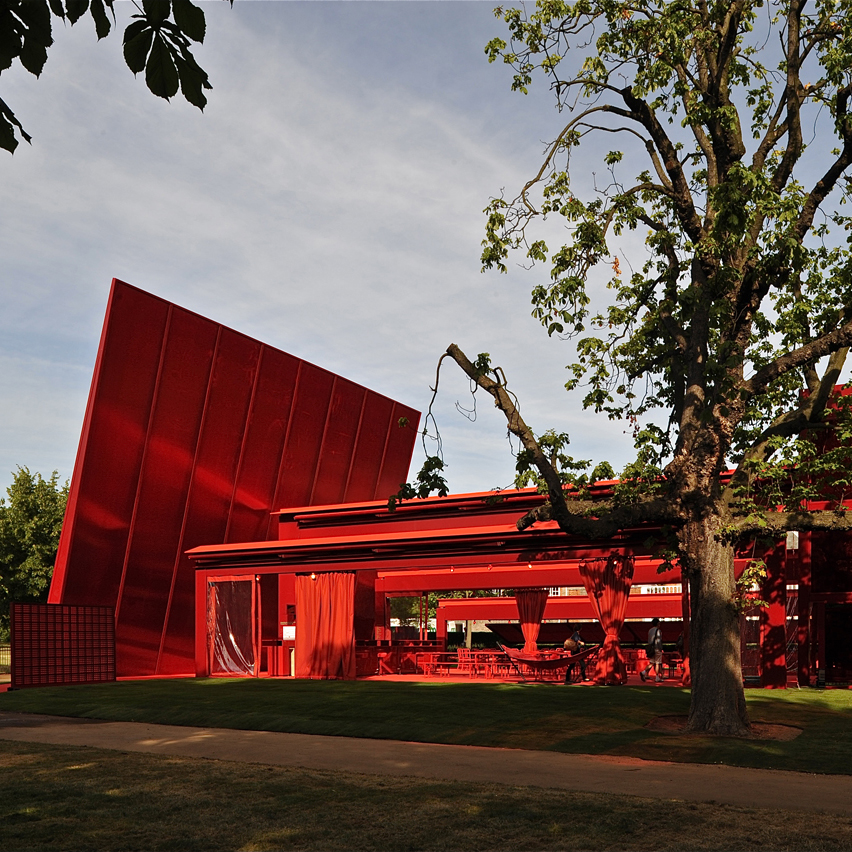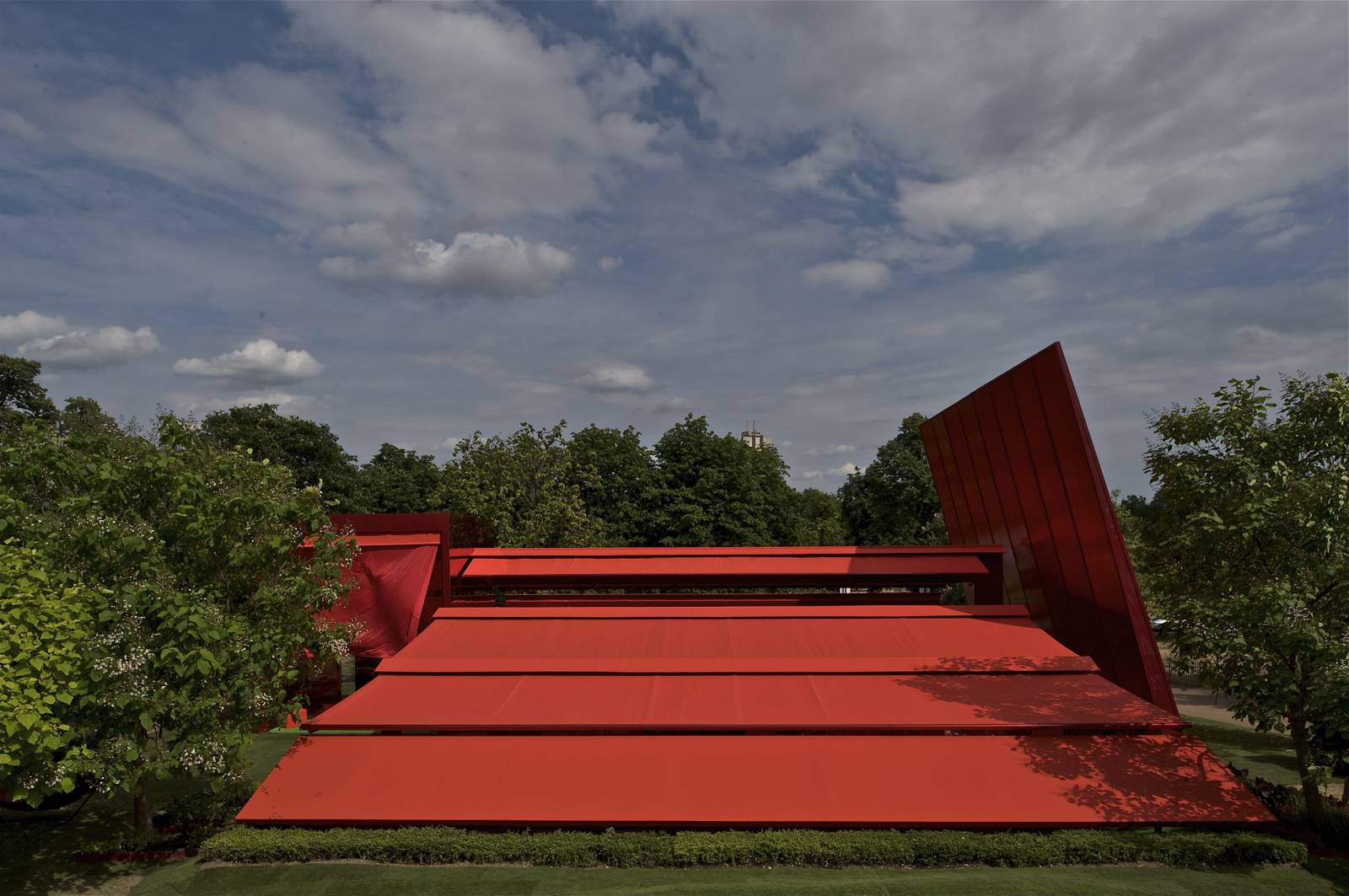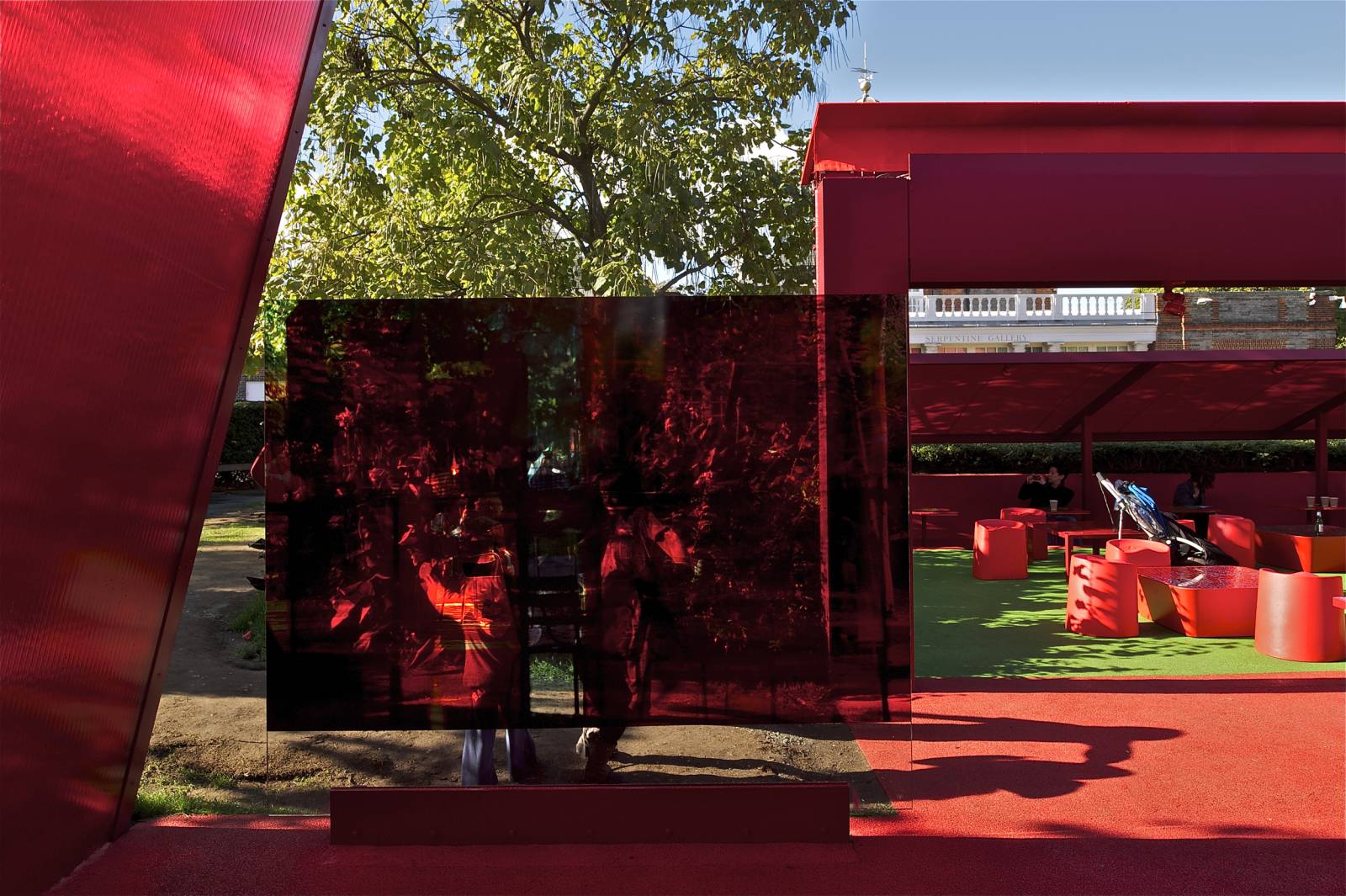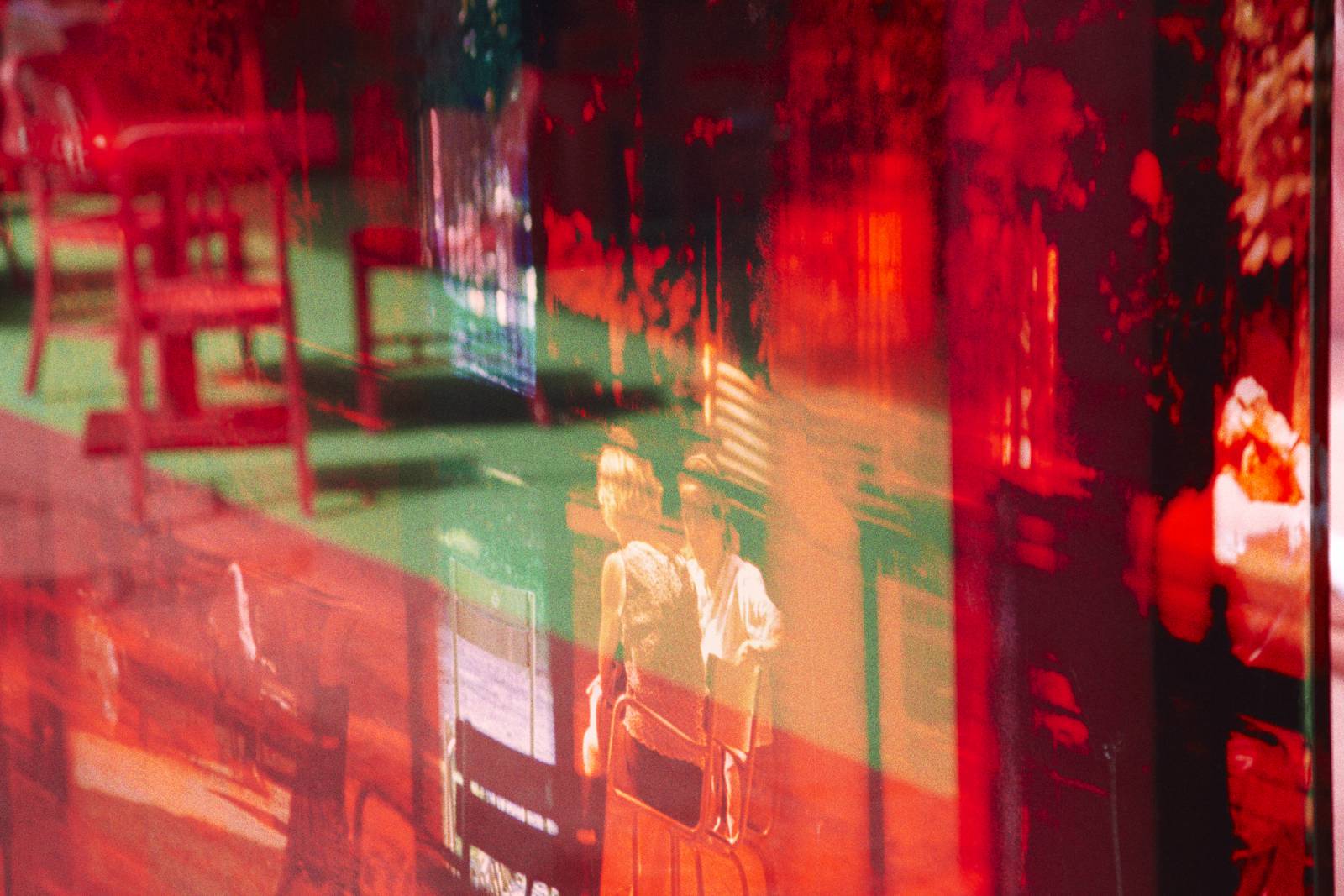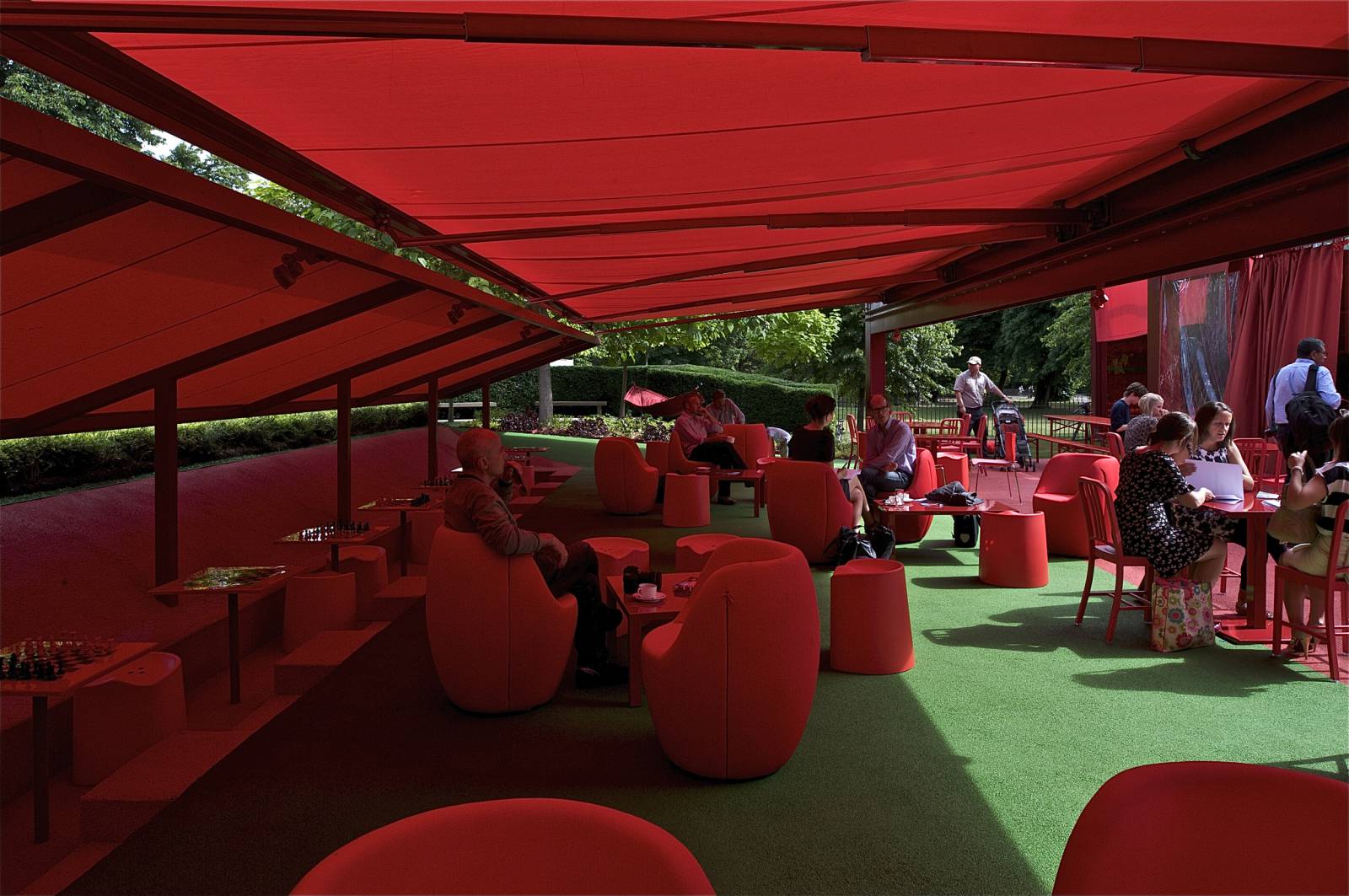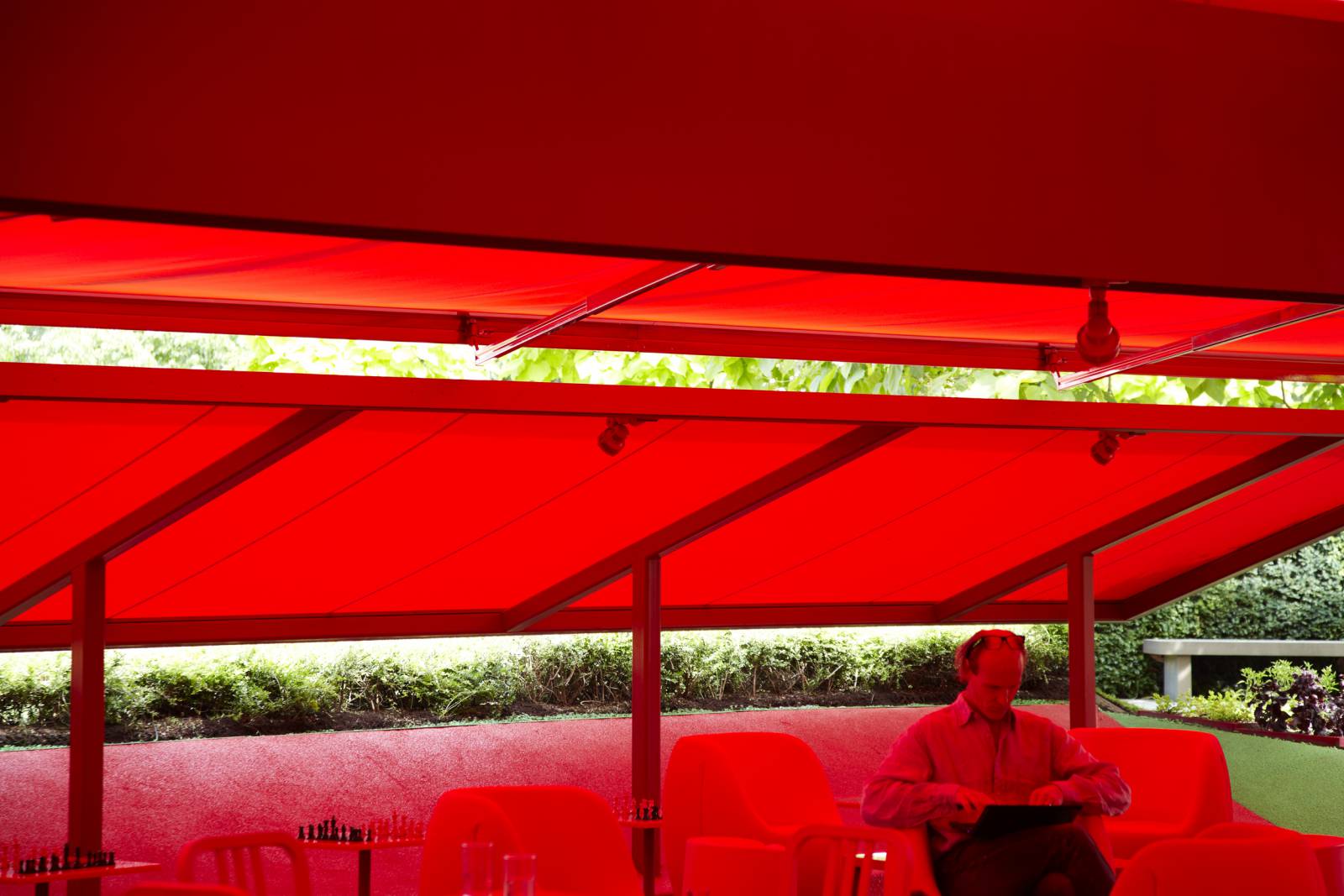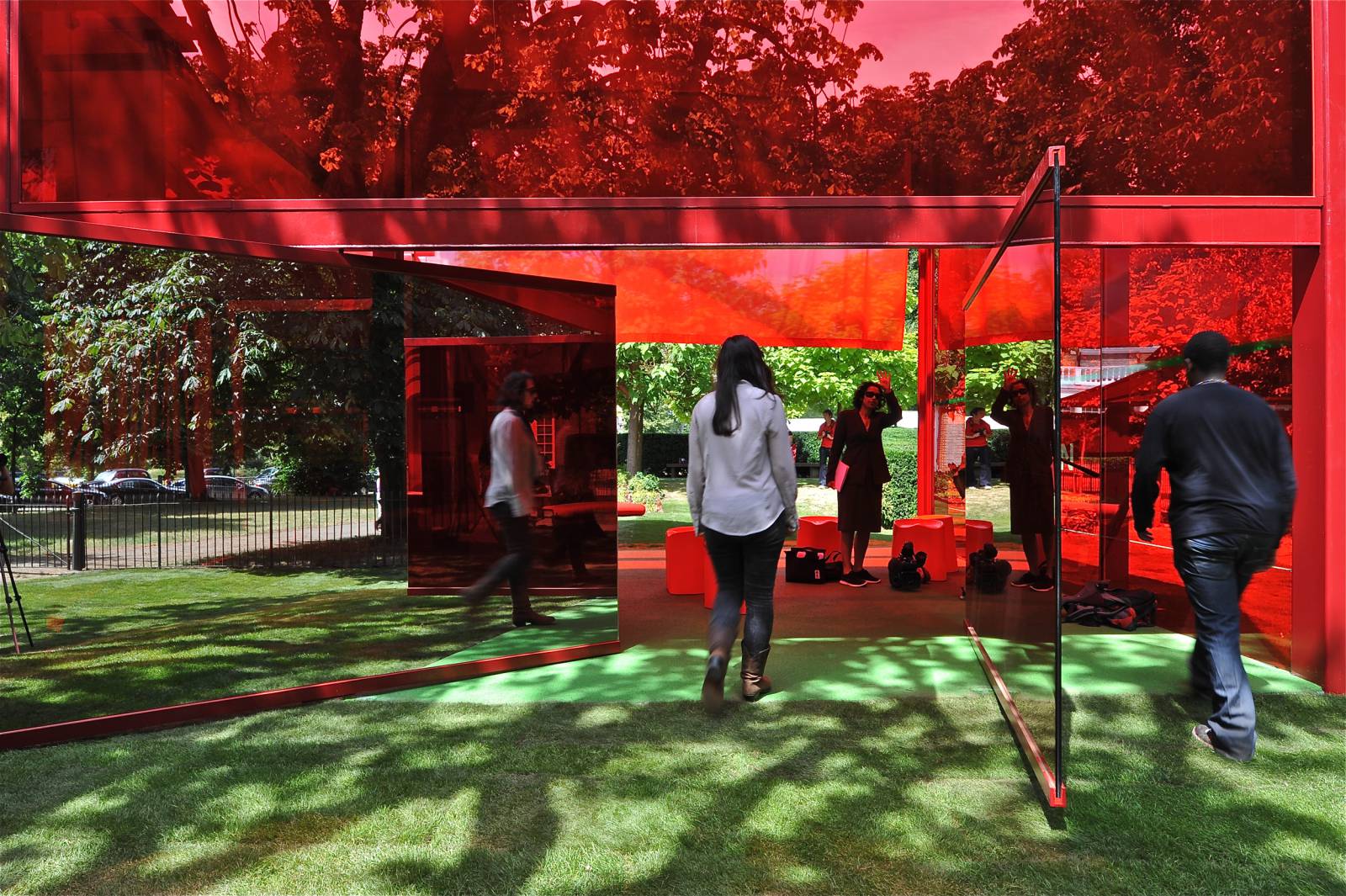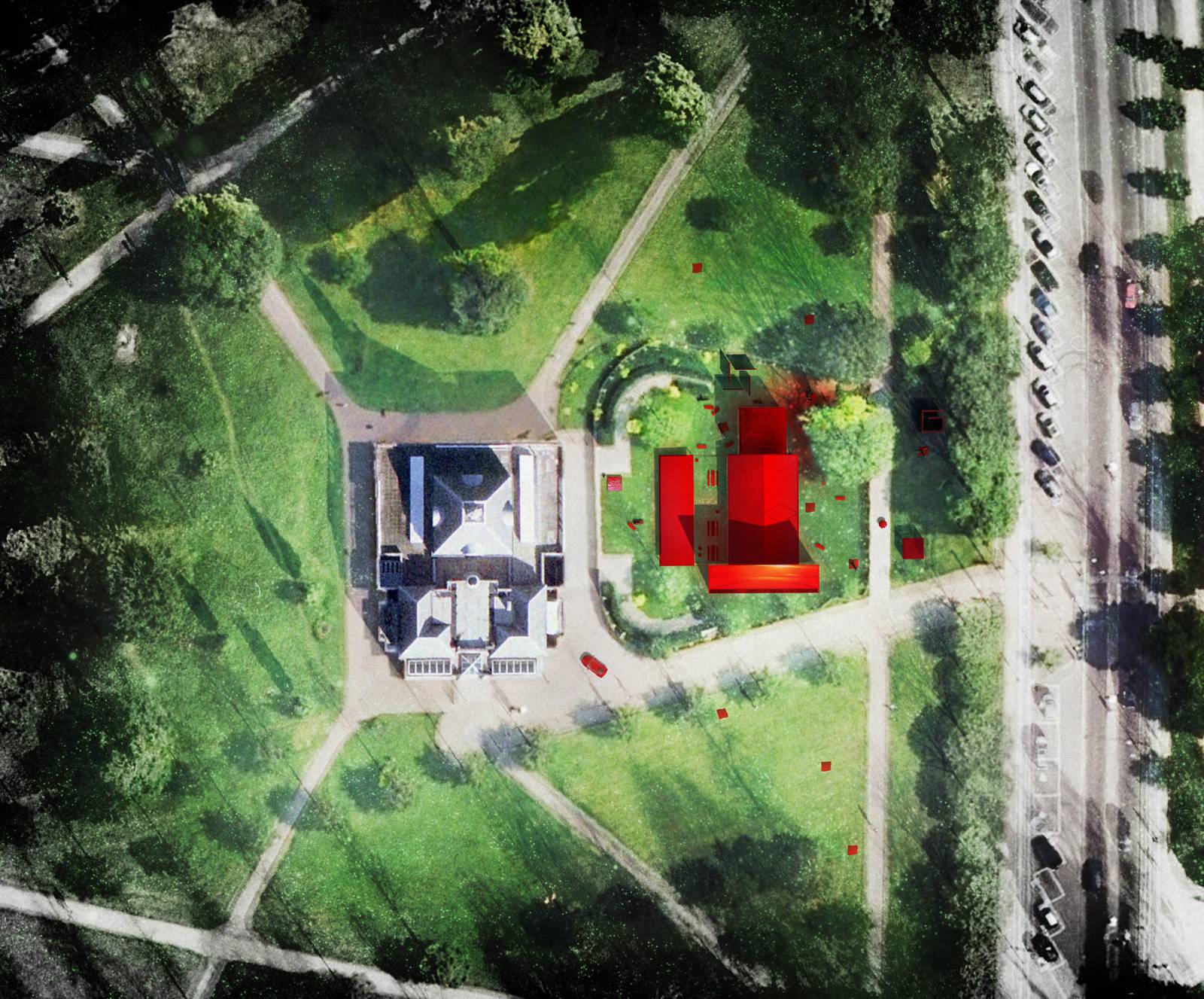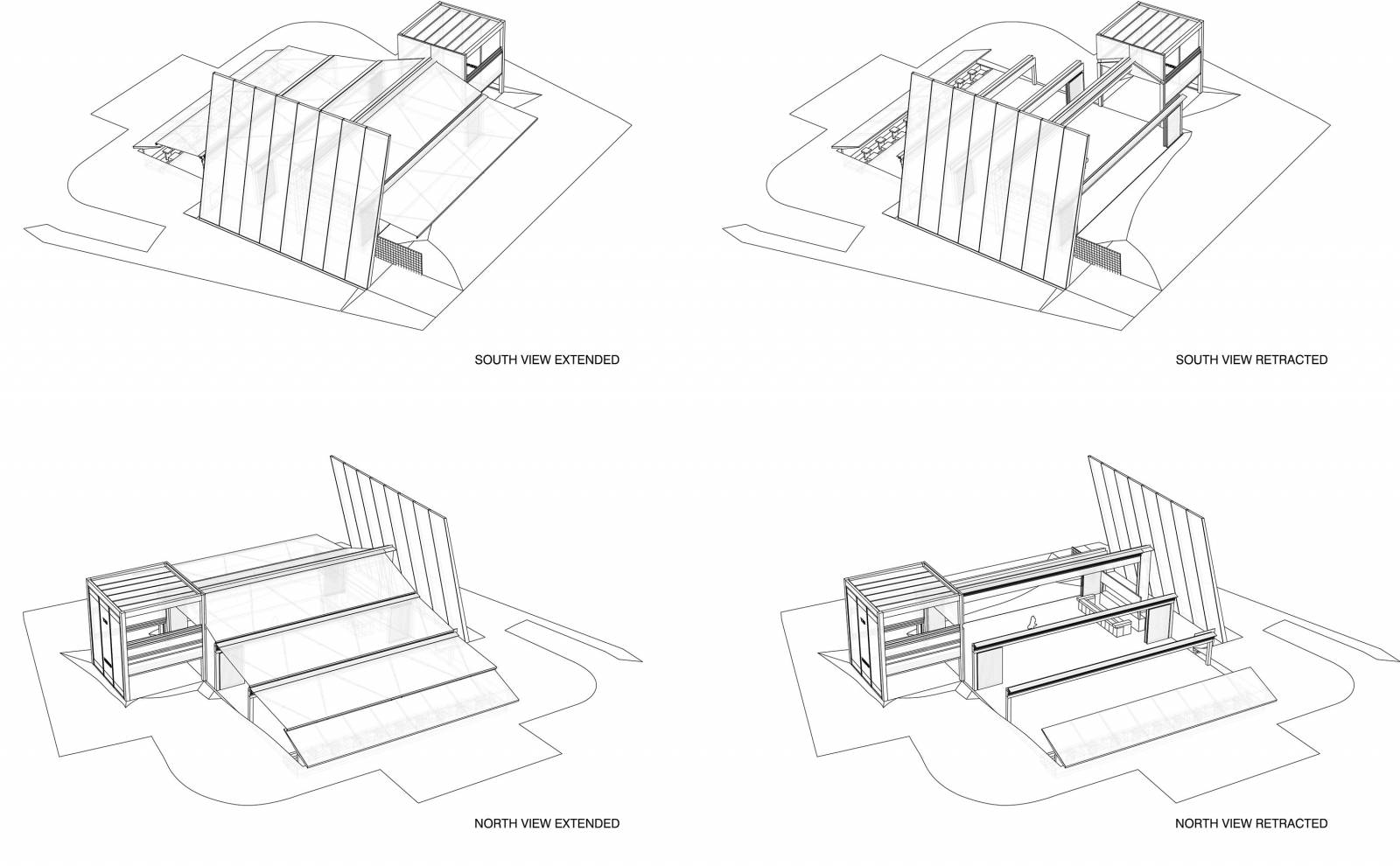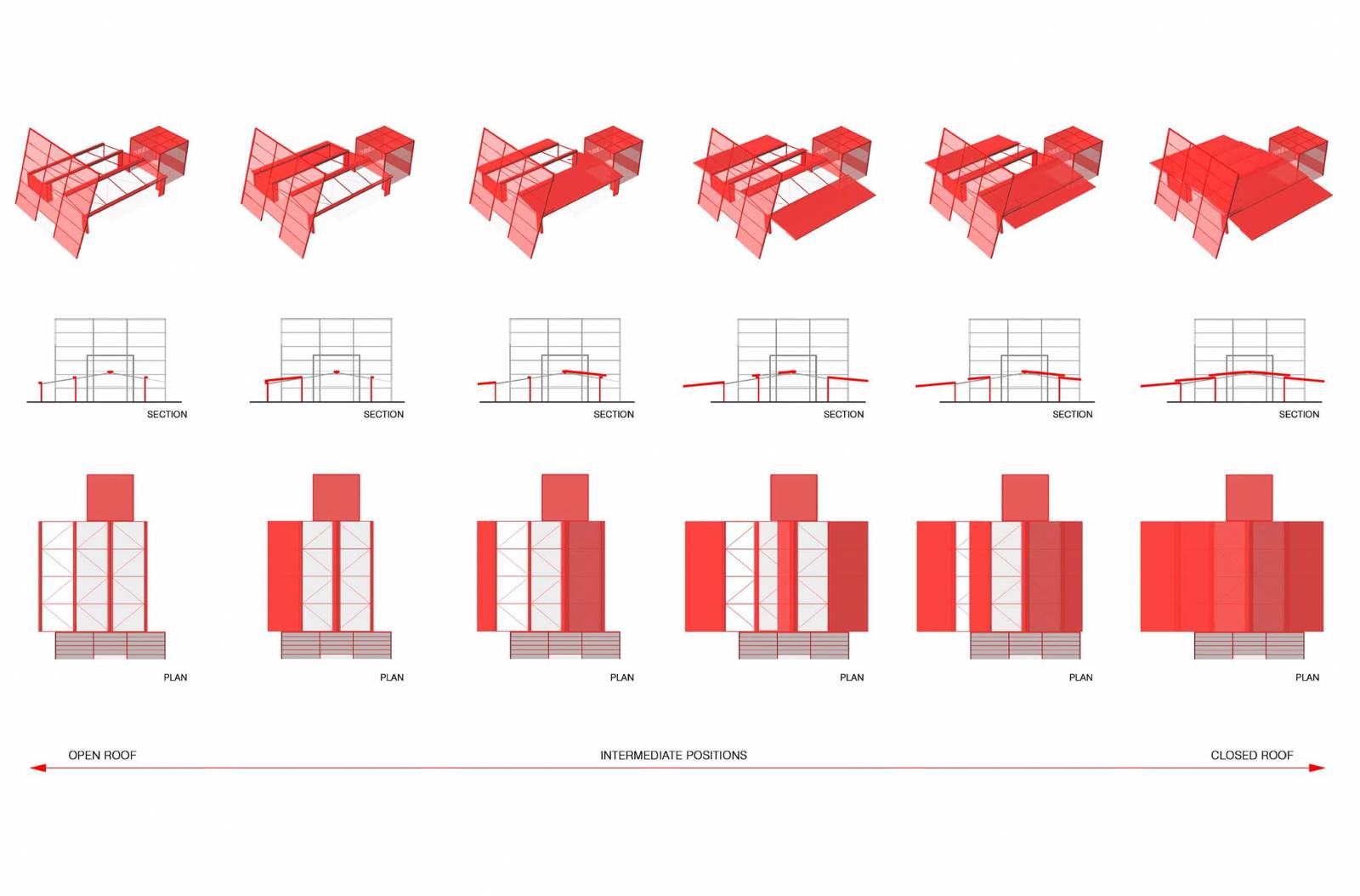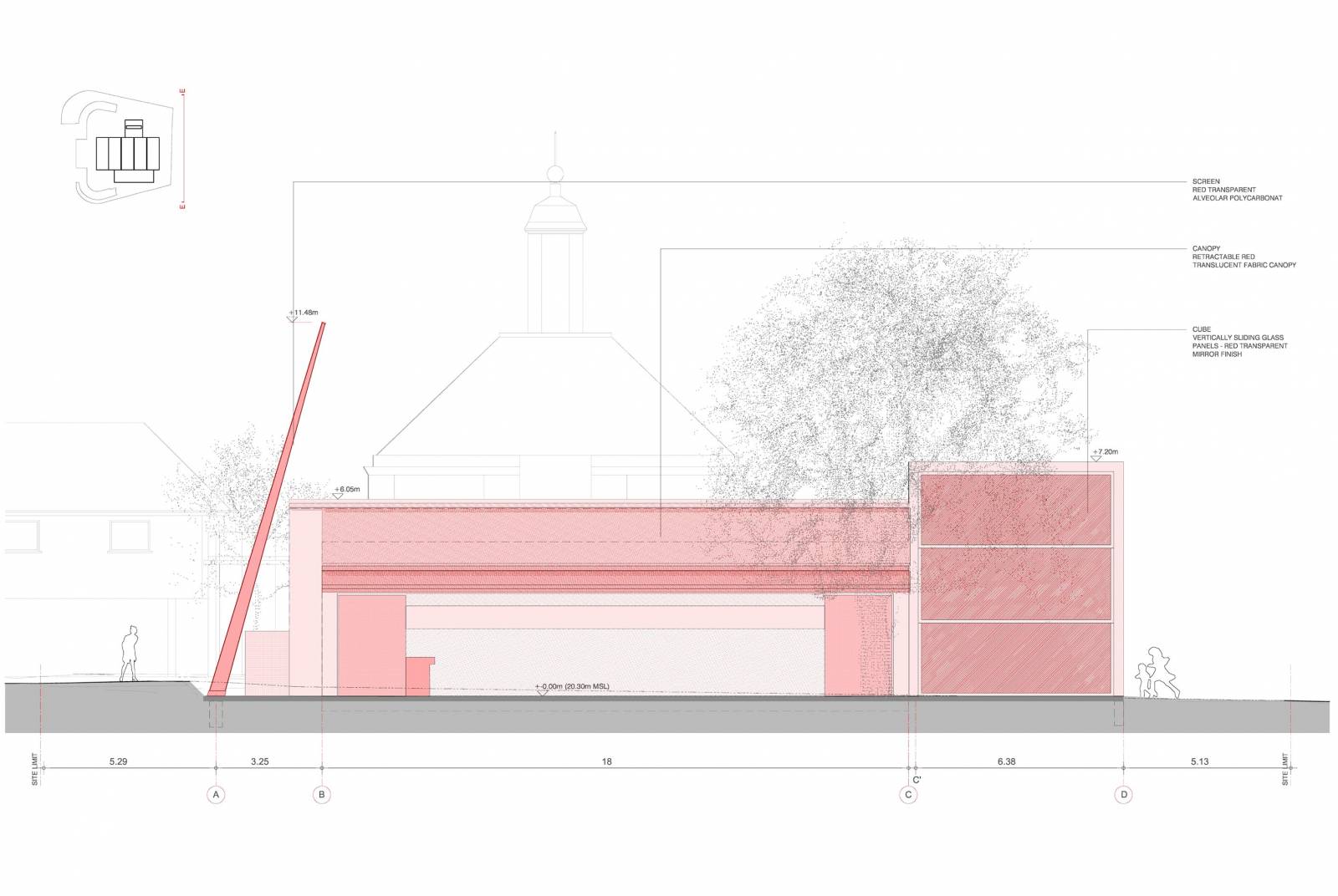Serpentine Gallery – The Red Sun Pavilion
- London, United Kingdom
The Red Sun Pavilion
A summer pavilion for the Serpentine Gallery?
Where to begin? How to launch into motion?
By opening my eyes… where am I?
In England. In London. In Hyde Park. English parks are a characteristic of English towns and cities. Expanses of lawn for all to enjoy. Meadows, really, of neatly-mown grass. Mostly flat, with trees and shrubs randomly dotted as though they had always been there, not something anyone really thought of. You can feel the city all around, as though it too had always been there. Most of the trees are deciduous; the seasons clearly proclaimed. From time to time a construction appears in this vast urban calm, a road or a path, occasionally a pond or a stream…
One wonders why such simple urban parks, these immense vacuities, are so rarely seen in other countries. Such a semblance of nothing is no small feat… leaving this huge, empty space open for all. One imagines the energy it must have taken to protect it. The constant care that must go into its maintenance, to keep the grass at just the right height, the trees in perfect health, so that everyone might stroll through this peaceful space and feel they are at home, in their city, in their park, the most natural thing in the world. So that whatever my mood, my desire for exteriority, alone, as a couple, with family or friends, whatever my age, the idea of spending a few minutes or a few hours in Hyde Park remains a peaceful temptation.
A park gives us freedom of choice. We choose to enjoy this inherited harmony, part way between the home we protect and the city that protects us. We walk, jog, sit on the grass, on a bench, ponder, chat, sing, play, share pastimes with our friends. We have our own little routine. Daily? Weekly? Probably seasonal. My ideal is that the Serpentine Gallery Pavilion should fit in with Hyde Park’s Londoners; that it shouldn’t disturb their routine but draw them to it, offer itself to them as a complementary experience. Their choice. It would be perfect if heightened curiosity and the desire to discover summer sensations should spread naturally through everyday conversation.
When am I? In summer. The trees are green, heavy with leaves. Some of the shrubs are in flower. The grass is strewn with people strolling, lounging, playing sport and games. More people than ever visit the Serpentine Gallery and the Wolfgang Tillmans exhibition. The summer pavilion is about to open. Its form is still vague, hard to perceive. It completes the picture. Grass and leaves are green here, too. Flowers pop up. Londoners take time out, enjoy a drink, play games in the shade, stretch out on the grass. Colour becomes bolder in summer, more dense. Greens are greener; flowers are brighter. The summer pavilion is like a beacon, a celebration of summer. It takes contrasts to the extreme. It is complementary. Complementary to the park, to the Serpentine Gallery’s brick. It’s red. It’s seasonal.
Red is summer heat. Red complements green.
Red is bright, alive, piercing.
Red is provocative, forbidden, loud.
Red is as English as a red rose, as red as London’s iconic objects, a double-decker bus or a telephone box, the transitory places we gravitate towards.
Red doesn’t last. Heat vanishes with the summer. Energy fades into inertia and death. The rose loses its petals and the sun is only red in the fleeting fire of dawn and dusk, when it appears and disappears. Red is the colour of passion, of fragile love that can never be eternal. Which is why we cultivate red, kindle it like a flame, protect and prolong it.
The Serpentine Gallery Pavilion 2010 switches to red to celebrate summer and its dazzling, burning-hot sun.
The pavilion exists to welcome summer and the sun, to better play with them.
Jean Nouvel
